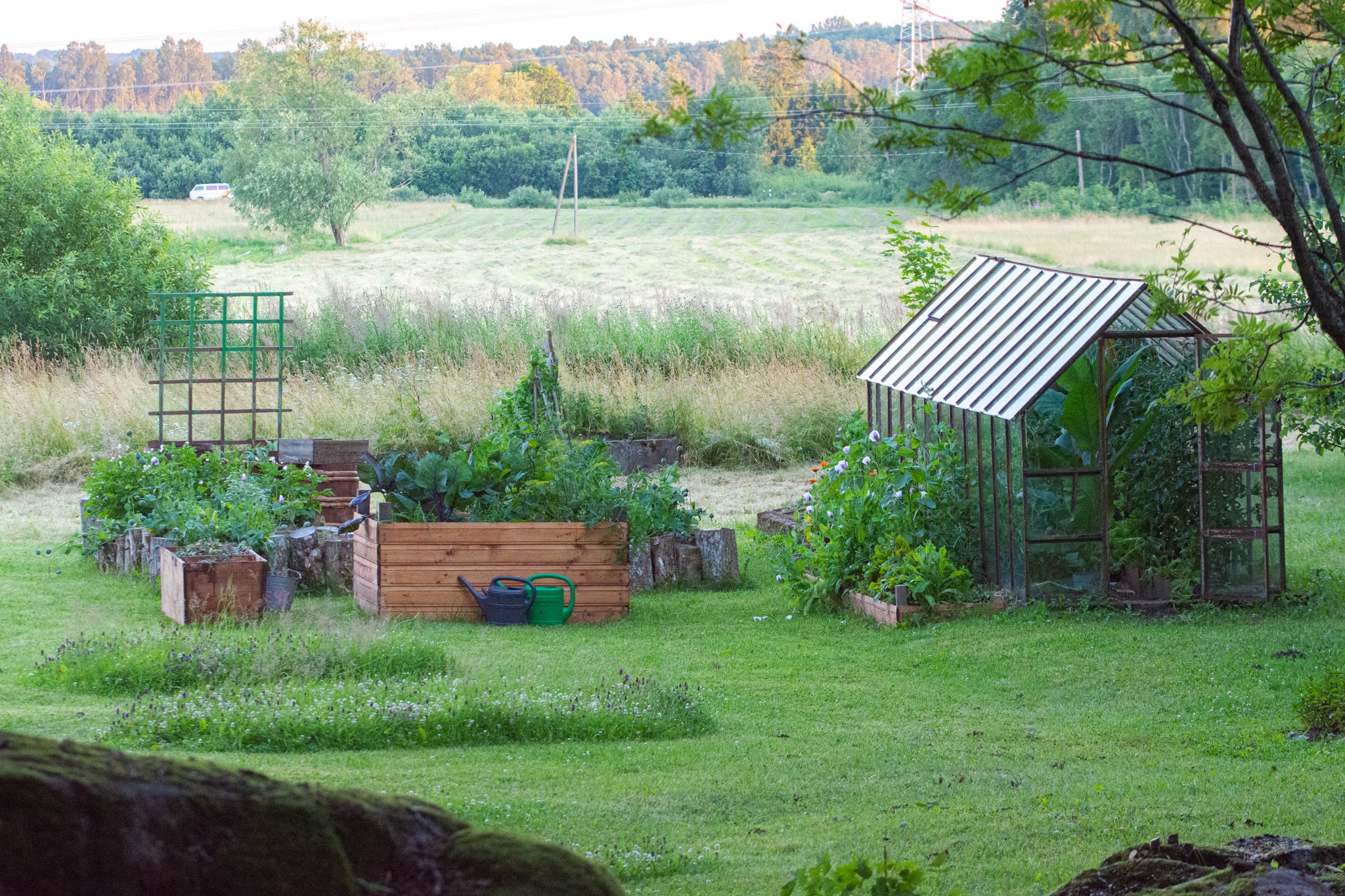Marko Veinbergs's self-sufficient garden bed
"The self-sufficient garden bed was on my mind long before this spring, where, in addition to all the other changes, I came to own a country house – an opportunity to go far away, back to where real work happens," says Marko Veinbergs, who graduated with a Master's degree in molecular biochemistry and ecology last winter.

Marko Veinbergs comments:
I grew up on the outskirts of Jõhvi, in an area with many gardens. Everyone planted something, everyone had a garden, everyone was fed by the gardens.
It was early on that I noticed the changes and developments of living nature and sought to understand them. Certainly, it was subconsciously accompanied by wondering how to benefit wisely from nature.
This spring, I was able to start experimenting with self-sufficient garden beds. It works on the principle of permaculture: let nature do what it does best, I'll just observe, maybe nudge if necessary. Sounds complicated and easy at the same time.
Permaculture has been described and explained down to the smallest detail and information about it is easy to find. However, I would suggest staying very creative in order to avoid getting lost in the information. A self-sufficient garden needs more thought than labour. And the beginning is always difficult. This is the only labour-intensive step in building permanent garden beds.
First come the ash logs
I based my garden beds around ash logs brought down by winter storms. I piled up twigs, leaves, cones and all kinds of other organic material for the bottom of the bed. I covered it all with dirt dug up by moles. In the first year, the bed is still raw, its substance cycles, living systems and decomposition processes have not yet been settled. I regularly dumped coffee grounds, earthworms, and ashes from burning wood debris into the beds. And most importantly: I got plenty of shit from a neighbouring farm!
As an experiment, I sowed lots of absolutely everything – and the result can be seen on the photos. Artificial but rich communities emerged, offering vast variety for my dinners throughout the summer and autumn.
The principle of permaculture has it that plants should grow like they do in nature: in diverse communities. The only trouble is that tomato, beet, dill, monks cress and sorrel are not naturally found together. Hence, a new perspective on plant breeding: to creatively bring together new systems of communities, to observe them and to notice connections that develop. And most importantly, to reap the benefits in terms of food and knowledge.
In fact, this knowledge has always been there for the taking. It seems to me that the background experience of the functioning of garden communities is great among Estonians. Gardeners simply do their thing, and what information is gained leaks out in small quantities and in a different form.
Risks and attacks
It is also crucial to understand that such a homebrewed system is an open system that is directly connected to everything around it. Certainly, a rich community is, to an extent, more resistant to external influences than a monoculture nursery. But there are also certain risks to consider. For example, nature launched a large-scale pest attack on my garden rocket. The plants in another row, three meters away, were left intact. The White Transparent was eaten on the night after planting. Cabbage suffered a reproductive attack by butterflies.
In fact, every plant in the experiment was snacked on, but the community as a whole withstood it very well, with a few exceptions. All planted species provided a yield – some plants very good, some less so. But the key word is diversity: my goal was never the quantity of food produced.
The availability of diverse raw ingredients tends to trigger new creative channels (in addition to salivary glands). As new experiences always do. And something new always emerges when creativity meets nature. The new ideas are revealed through the entire process.
Self-grown food also has one indescribable (good) quality. In order to understand this, however, one has to grow their own raw ingredients and magic them into food. And growing amazing ingredients takes no more than space and creativity. Nature does not tolerate empty space: so set up a garden bed wherever there is some.



